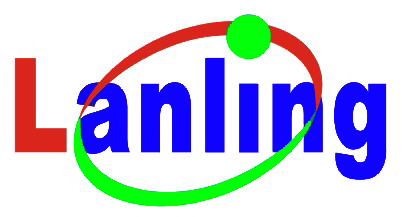 |
SHENZHEN LANLING TECHNOLOGY CO., LTDThe Pro manufactuer of stage laser lights and LED lights in China |
|
||||||
News Center
Laser Modulation
Modulation
Most DPSS lasers used in laser projectors support modulation. Modulation has to do with blanking but is a slightly broader term. A DPSS laser will support either 'analog modulation' , 'TTL modulation' or both. Modulation is usually specified in terms of kHz. 2 kHz can be considered low and 30 kHz can be considered high. Manufacturers do not specify an exact relationship between this number and the behavior of the laser.
Laser lights are generally divided int 2 modulations:
(1) TTL digital modulation
(2) Analogue modulation
Analog modulation
An analog signal is used to control the intensity of the output beam. This signal is usually a voltage in the range of 0 V to 5 V. With an RGB laser and analog modulation you have, with an 8 bit system, 16.7 million colours at your disposal.
However, since most laser show softwares uses a 0-100% control for laser brightness modulation (so 100 steps instead of 255), the total of available colours at disposal is 1'000'000. Furthermore, usual laser sources start lasing at a voltage between 1-2 volts and reach their full brightness at voltages between 3.5-4V, and the power/voltage curve between these points are usually not perfectly linear. Consequently the dynamics of the color palette in a real lasershow use is decreased to only a few thousands of different colors.
TTL Modulation
TTL modulation indicates that the laser does not support analog modulation of the output but only ON / OFF control. See blanking. With an RGB laser and TTL blanking you have seven colours at your disposal. Red, Green, Blue, Cyan, Magenta, Yellow, White.
Lanling lasers originally are built in TTL modulation, even we can make analogue modulation though. Whether you want the TTL or analogue modulation, it depends on the laser power output and wavelength. You need to send your inquiry to Lanling before order.
Most DPSS lasers used in laser projectors support modulation. Modulation has to do with blanking but is a slightly broader term. A DPSS laser will support either 'analog modulation' , 'TTL modulation' or both. Modulation is usually specified in terms of kHz. 2 kHz can be considered low and 30 kHz can be considered high. Manufacturers do not specify an exact relationship between this number and the behavior of the laser.
Laser lights are generally divided int 2 modulations:
(1) TTL digital modulation
(2) Analogue modulation
Analog modulation
An analog signal is used to control the intensity of the output beam. This signal is usually a voltage in the range of 0 V to 5 V. With an RGB laser and analog modulation you have, with an 8 bit system, 16.7 million colours at your disposal.
However, since most laser show softwares uses a 0-100% control for laser brightness modulation (so 100 steps instead of 255), the total of available colours at disposal is 1'000'000. Furthermore, usual laser sources start lasing at a voltage between 1-2 volts and reach their full brightness at voltages between 3.5-4V, and the power/voltage curve between these points are usually not perfectly linear. Consequently the dynamics of the color palette in a real lasershow use is decreased to only a few thousands of different colors.
TTL Modulation
TTL modulation indicates that the laser does not support analog modulation of the output but only ON / OFF control. See blanking. With an RGB laser and TTL blanking you have seven colours at your disposal. Red, Green, Blue, Cyan, Magenta, Yellow, White.
Lanling lasers originally are built in TTL modulation, even we can make analogue modulation though. Whether you want the TTL or analogue modulation, it depends on the laser power output and wavelength. You need to send your inquiry to Lanling before order.
【 Go Back 】 | 【 Print 】 | 【 Close this window 】














